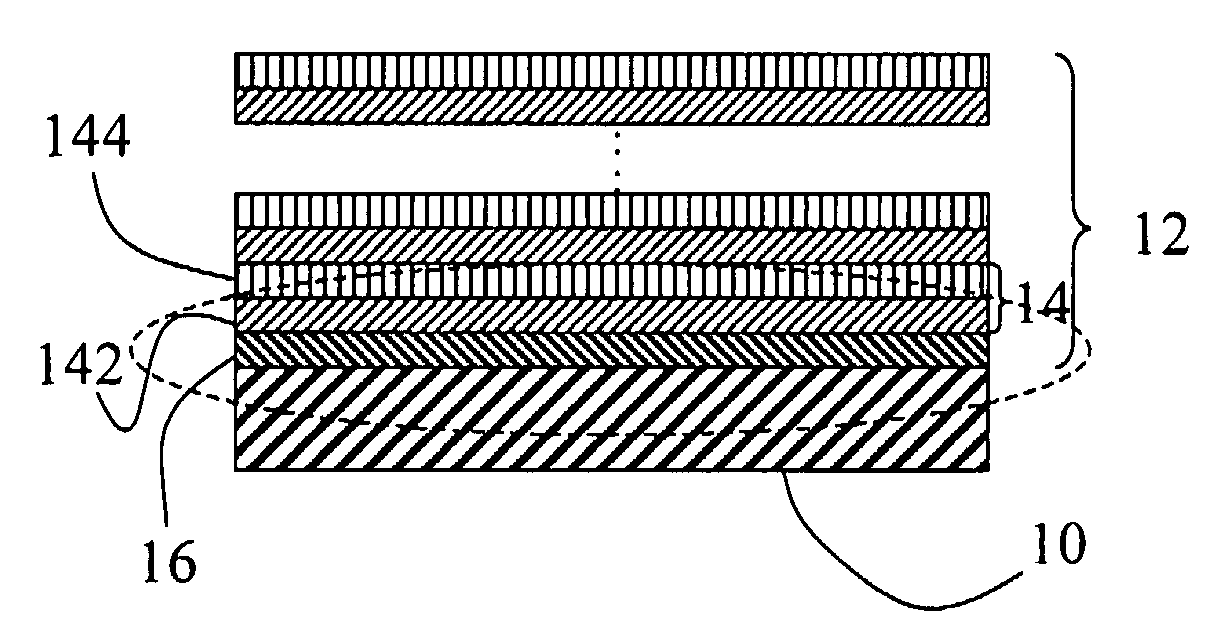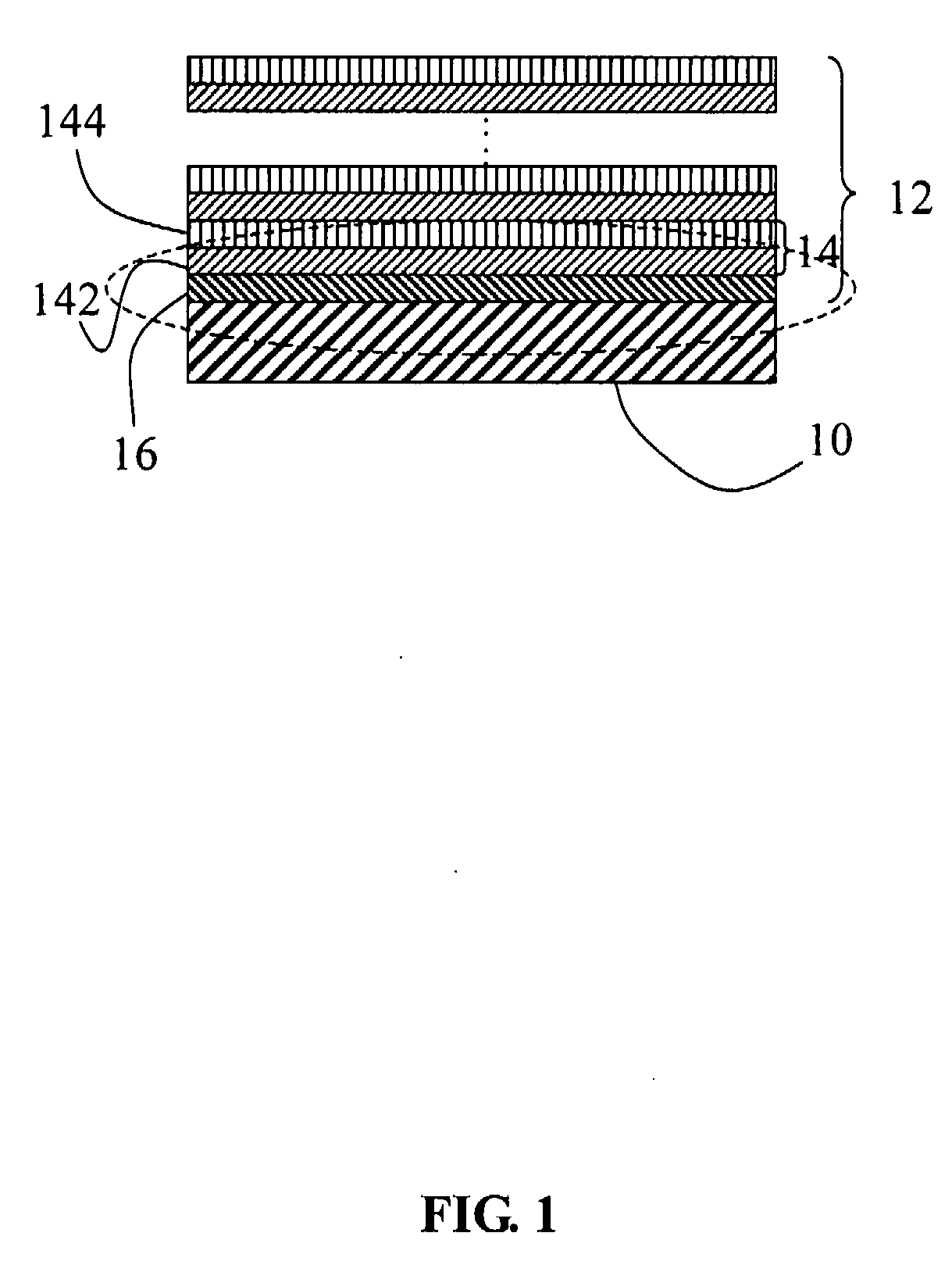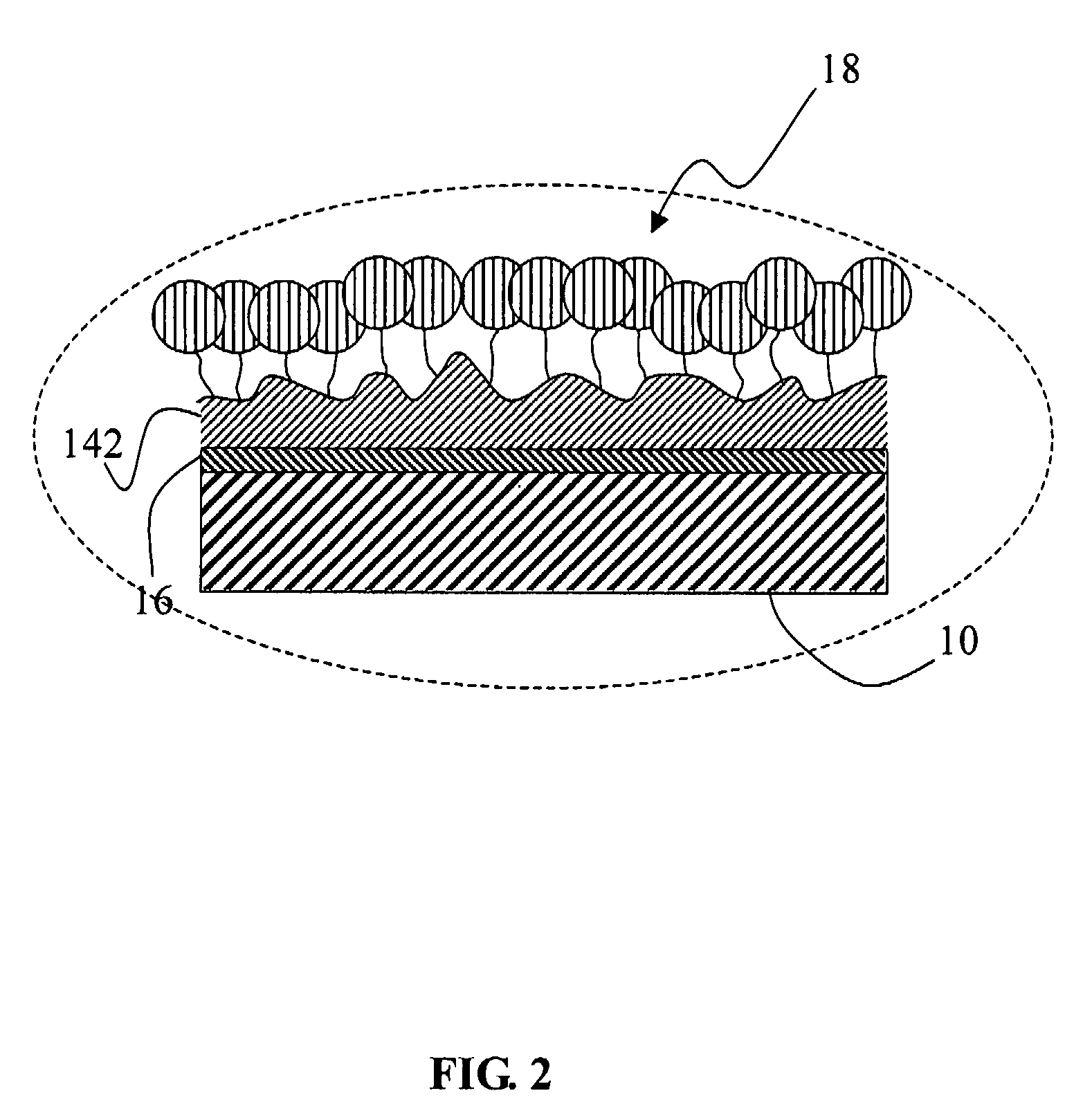Coronary stent having a surface of multi-layer immobilized structures
a multi-layer immobilized structure and coronary artery technology, applied in the field of coronary artery stents having a surface of multi-layer immobilized structures, can solve the problems of limited hemocompatibility of conventional stainless steel coronary artery stents, severe thrombosis of conventional coronary artery stents, and inability to improve the effectiveness of hemocompatibility of using only polysaccharide for coating the stainless steel coronary artery s
- Summary
- Abstract
- Description
- Claims
- Application Information
AI Technical Summary
Benefits of technology
Problems solved by technology
Method used
Image
Examples
first embodiment
Apparatus for Coronary Stent
[0031]First, surface modification is performed on a stainless-steel plate (SUS316L). The stainless steel plate, prior to being heated at 500° C., is firstly ultrasonic-vibrated three times inside an acetone solution, and later is soaked in nitric acid for 20 minutes, thereby removing the impurities from the stainless-steel surface. The stainless steel plate after the aforementioned cleaning process is hereby referred to as “pure SS”.
[0032]The stainless-steel plate using aminotrimethoxysilane (ATMS) is taken to perform silylation, wherein the stainless-steel plate is soaked inside 1 wt % ATMS toluene solution, and also agitation under ultrasound for one hour is performed. After cleaning using toluene and ethanol, finally again sonic vibration is performed for 5 minutes. Then it is air dried. The sample produced is thereby referred to as “SS-ATMS”.
[0033]The “SS-ATMS” stainless steel plate is then soaked at 25° C. in 20 ml distilled water containing 0.5 g of...
second embodiment
[0037]The stent sample which has underwent surface modification as fabricated in the first embodiment has its surface hydrophilicity measured using a goniometer and assessed using the water contact angle (θ). The stainless steel sample, after surface modification, is using Mg as the anode, and is analyzed under XPS at 1253.6 eV and 150 W of power. Scanning measurements are performed using a variety of eVs to O1s, Si2p, N1s, and S2p. The surface roughness is inspected using atomic force microscopy (AFM).
[0038]FIG. 3 illustrates the contact angles between the surface-modified stainless steel samples and distilled water. After performing heat treatment (74.0°) and nitrate immersion (59.5°) at 500° C., the contact angles are lower than the untreated stainless steel sample (85.2°), and later the silylation clearly changes the surface wettability. Wherein is visible after silylation is to be embedded in the HA and HEP steps (namely, SS-ATMS-HA and SS-ATMS-HA-HEP) when compared with SS-ATM...
third embodiment
[0042]30 ml of human blood is retrieved from a healthy donor and is mixed with a liquid solution containing 0.136 M D-glucose, 75 mM sodium citrate, and 0.4 mM citric acid. Later, the human blood is centrifuged under 300 g at 4° C. for 20 minutes for separating the blood corpuscles from the platelet-rich plasma (PRP). Later, a portion of the PRP is removed and centrifuge is performed under 2000 g at 4° C. for 20 minutes to obtain the platelet-poor plasma (PPP) to provide for the human plasma-protein adsorption test. The substrate material is placed in 0.5 ml of PPP at under 37° C. for 1 hour. The activated partial thrombin time (APTT) for the PPP undergoing reaction, the prothrombin time (PT), the fibrinogen time (FT), and the thrombin time (TT) are measured using an automated blood coagulation analyzer during testing. In addition, testing is performed to test tubes containing no test samples as the control group.
[0043]The blood coagulation cascade includes intrinsic pathway, extrin...
PUM
| Property | Measurement | Unit |
|---|---|---|
| contact angles | aaaaa | aaaaa |
| contact angles | aaaaa | aaaaa |
| binding energy | aaaaa | aaaaa |
Abstract
Description
Claims
Application Information
 Login to View More
Login to View More - R&D
- Intellectual Property
- Life Sciences
- Materials
- Tech Scout
- Unparalleled Data Quality
- Higher Quality Content
- 60% Fewer Hallucinations
Browse by: Latest US Patents, China's latest patents, Technical Efficacy Thesaurus, Application Domain, Technology Topic, Popular Technical Reports.
© 2025 PatSnap. All rights reserved.Legal|Privacy policy|Modern Slavery Act Transparency Statement|Sitemap|About US| Contact US: help@patsnap.com



